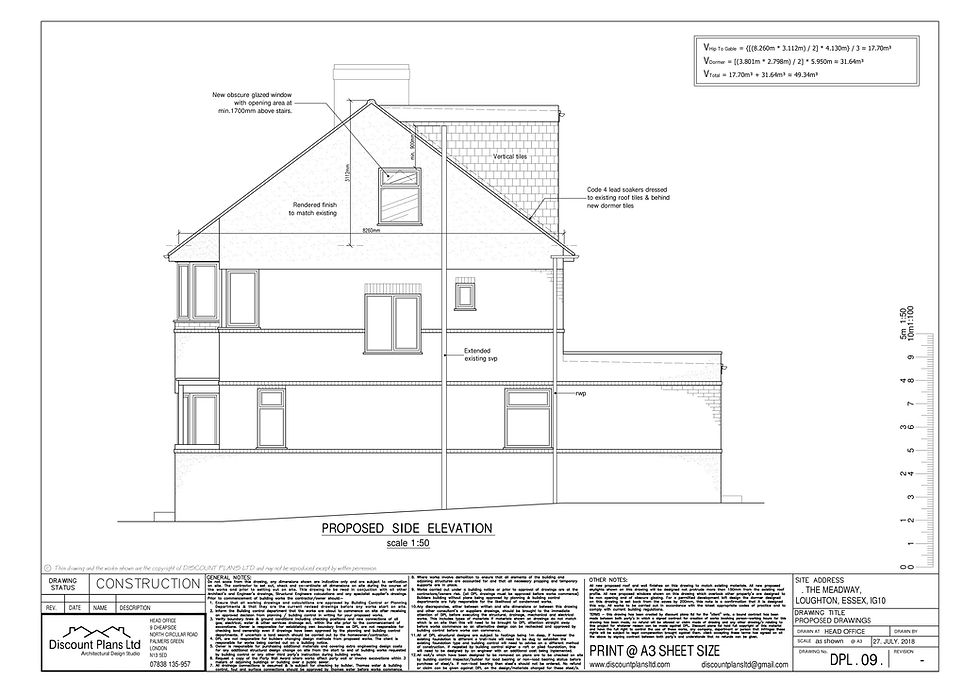A hip to gable loft conversion is one of the most popular home improvement projects in the UK, especially for those living in semi-detached or detached houses. This innovative conversion extends the sloping side of your roof, known as the “hip,” and replaces it with a new vertical wall, called a “gable.” The result is a spacious, modern living area that blends seamlessly with the rest of your home. It’s a practical way to add value, create new rooms, and enhance your property’s appearance.
Homeowners across the UK are choosing a hip to gable loft conversion as it transforms previously unused lofts into bright, functional spaces. Whether you want a luxurious bedroom, a quiet home office, or a stylish guest suite, this type of conversion allows you to achieve your dream design without extending your home’s footprint. It’s a smart investment that improves your home’s comfort and increases its resale potential.
Understanding What a Hip to Gable Loft Conversion Is
A hip to gable loft conversion modifies your existing hipped roof, which typically slopes down on all sides, by extending one side upwards to form a gable end. This structural change increases both floor space and headroom, making it ideal for properties where traditional lofts feel cramped. By transforming the roof shape, you gain a full-height room that’s perfect for modern living.
This type of conversion is particularly suited to semi-detached, detached, and end-of-terrace houses. It offers a sleek exterior look that enhances your property’s symmetry. Compared to dormer or mansard conversions, a hip to gable loft conversion provides a natural extension of your roofline, maintaining your home’s original charm while providing additional space and light.
Why Choose a Hip to Gable Loft Conversion for Your UK Home
Many UK homeowners choose a hip to gable loft conversion because it maximises their home’s potential. Properties with hipped roofs often have limited attic space, making it difficult to use effectively. By converting the sloping side into a vertical gable wall, the available floor area increases significantly. This extra space can be used for anything from a master bedroom to a home gym, offering both comfort and practicality.
Beyond functionality, a hip to gable loft conversion enhances your property’s aesthetics and value. Adding an extra storey not only improves your home’s layout but also boosts its market appeal. Estate agents often report that a high-quality loft conversion can add up to 20% to a property’s value, making it a worthwhile investment for families planning to stay long-term or sell in the future.
Planning and Building Regulations for a Hip to Gable Loft Conversion

Before starting your hip to gable loft conversion, it’s important to understand UK planning laws. In many cases, these conversions fall under permitted development rights, meaning you may not need formal planning permission. However, homes in conservation areas or listed properties often require additional approval. Checking with your local planning authority is essential before beginning construction.
Building regulations are also crucial to ensure your hip to gable loft conversion is safe and compliant. Structural integrity, fire safety, insulation, and stair access must meet national standards. Professional architects and engineers handle these details to guarantee quality and safety. Following these regulations ensures your conversion not only looks great but performs perfectly for years to come.
Step-by-Step Process of a Hip to Gable Loft Conversion
A typical hip to gable loft conversion begins with a detailed property survey. Architects assess the structure of your roof, measure available space, and design a layout that suits your needs. Once the plans are finalised, builders remove the existing hipped section and construct the new vertical gable wall. This forms the foundation of your new loft structure.
Next, insulation, electrical wiring, and plumbing are installed to prepare the space for finishing touches. Flooring, windows, and interior fittings are added to complete the transformation. The entire process usually takes six to eight weeks, depending on complexity. With professional contractors, your hip to gable loft conversion will be completed efficiently and to the highest standard.
Cost of a Hip to Gable Loft Conversion in the UK
The cost of a hip to gable loft conversion in the UK varies depending on the size of your property, design complexity, and location. On average, homeowners can expect to pay between £40,000 and £65,000. Factors such as roofing materials, internal finishes, and additional features like en-suites or dormer extensions can affect the total cost.
While this may seem like a major investment, the value it adds to your home often outweighs the expense. A professionally completed hip to gable loft conversion increases usable living space, improves energy efficiency, and enhances property value. Budgeting carefully and obtaining multiple quotes from reputable loft conversion specialists ensures the best results for your project.
Design Ideas and Inspiration for Hip to Gable Conversions
Designing your hip to gable loft conversion allows for creativity and personalisation. Many homeowners use the space as a stylish master bedroom with skylights and modern en-suites. Others transform it into home offices, art studios, or playrooms. Large windows and Velux skylights maximise natural light, making the new space bright and welcoming.
Storage can also be cleverly integrated into sloping areas, ensuring no space goes to waste. Using neutral colours, contemporary lighting, and energy-efficient insulation helps create a warm, comfortable environment. Whether you prefer a modern minimalist look or a cosy traditional feel, your hip to gable loft conversion can be tailored to reflect your lifestyle and taste.
Benefits of a Hip to Gable Loft Conversion
The benefits of a hip to gable loft conversion extend far beyond extra space. One of the most significant advantages is increased headroom and floor area, which transforms previously limited lofts into fully functional rooms. This additional space can accommodate growing families or create private areas for relaxation and work.
Another major benefit is the boost in property value. Estate agents consistently note that homes with a completed loft conversion are more attractive to buyers. Moreover, this type of conversion improves the overall appearance of the property, giving it a more balanced and appealing exterior. For homeowners seeking both beauty and practicality, a hip to gable loft conversion offers the perfect combination.
Choosing the Right Builder or Loft Conversion Specialist
Selecting the right builder for your hip to gable loft conversion is vital to achieving a professional finish. Look for companies with proven experience, strong reviews, and proper certifications such as TrustMark or Federation of Master Builders (FMB) membership. Always request detailed quotations that outline costs, materials, and timelines before committing.
A reputable contractor will handle planning permissions, manage building regulations, and communicate progress clearly. Working with experts ensures your hip to gable loft conversion is completed safely, efficiently, and to your expectations. Investing in quality craftsmanship guarantees a durable and beautifully finished result that enhances your home for years.
Conclusion: Is a Hip to Gable Loft Conversion Worth It?
A hip to gable loft conversion is one of the most practical and rewarding home improvement projects in the UK. It transforms unused attic space into valuable living areas, adds style and symmetry to your home, and significantly increases its market value. For families needing extra room, this conversion offers a cost-effective alternative to moving house.
With proper planning, professional advice, and adherence to regulations, your hip to gable loft conversion can become a stunning addition to your property. Whether you dream of a master suite, a home office, or a peaceful retreat, this conversion turns your vision into reality while improving your lifestyle and investment potential.
You may also read: How My Job Quote Supports Tradespeople







